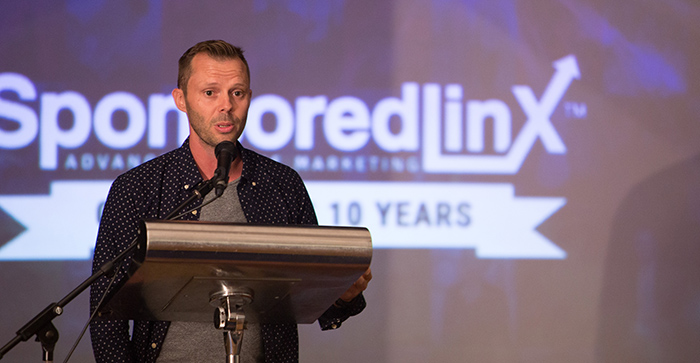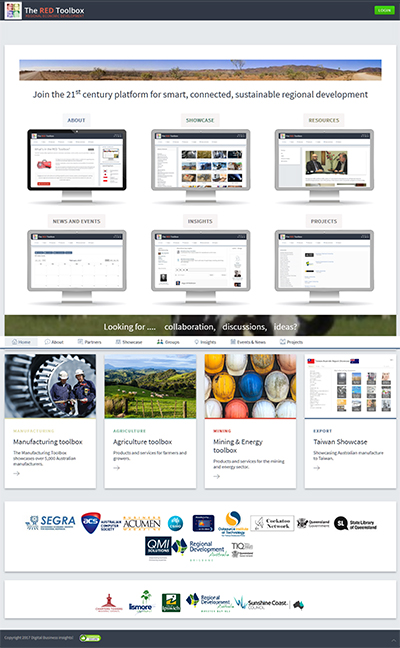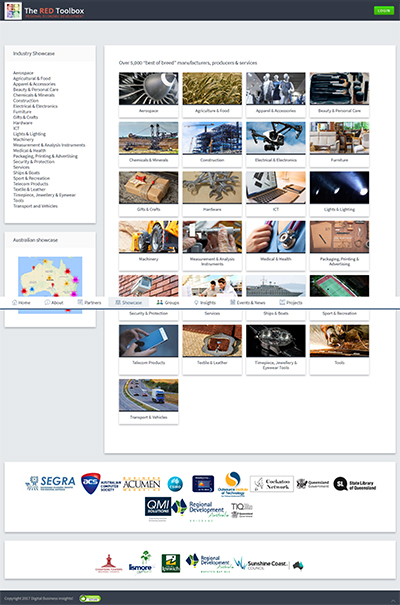Putting the ED into the RED Toolbox
THE REGIONAL Economic Development (RED) Toolbox has evolved to help business and all levels of government consider Australia’s most challenging economic issue: the future of work and jobs.
An offshoot of the RED Toolbox called the ‘ED Toolbox’ is being developed to muster intelligence and action around this crucial question – and it is designed to involve educators, colleges and schools in tandem with business leaders.
“This is a problem the entire world is facing and the ED Toolbox is designed to help Australia come to grips with it and develop collaborative solutions and pathways with the help of our platform,” RED Toolbox CEO John Sheridan said. 
“We have been researching and speaking about digital disruption and what it will mean to Australia’s economic development for more than 20 years and have developed these national collaboration platforms – first the Manufacturing Toolbox and now The RED Toolbox and its derivative the ED Toolbox – to help Australians navigate these challenges.
“These are digital platforms designed to help Australians work together to manage the challenges brought on by the digital revolution.”
Mr Sheridan said business and government remained largely bewildered – and in many cases fearful – of the growth and impact of artificial intelligence (AI) systems, robotisation, the internet of things (IoT), virtual reality (VR), augmented reality (AR), blockchain, biometrics, mobile apps, remote sensing, three-dimensional (3D) printing, cyber-security, drones, nanotechnology, big data, cloud services, building information modelling (BIM), cryptocurrency, identity management, facial recognition and social media.
The huge digital organisations that are utilising and developing these systems – often at a pace too rapid for regulators – including Amazon, eBay, Alibaba, Uber, Facebook, Google, Microsoft and Apple are also a huge area of economic concern. Governments around the world are struggling with their impacts on communities, local businesses, legislation, tax receipts and economies.
“These are giant problems that governments and the general public are only now starting to realise provide both threats and opportunities,” Mr Sheridan said. “The big question on everyone’s lips is, what does this mean for jobs and how will our economies adapt and develop?”
ED TOOLBOX FOCUS
Mr Sheridan said The RED Toolbox was progressing steadily as a collaboration platform, but through discussions developing among its Groups certain issues were clearly taking precedence.
Various industry experts, business leaders and many educators were seeking a way of taking action in preparing young people to cope with a new employment paradigm, brought about by the digital revolution.
“So we started work on what we started calling the ‘ED Toolbox for schools’ a resource for students, teachers and parents – and Australia’s education leadership,” Mr Sheridan said. “The ED Toolbox is designed to deliver a wide spectrum of insights, facts and figures, dashboards, charts, tables, graphs, case studies and videos illustrating the technology impacts across all 19 industry sectors and 500 business categories.
“Technology delivers threats and opportunities, but its impacts vary widely for different business categories and industry sectors. With the right knowledge, students, parents and teachers can plan the future more effectively.”
EXPLAINING BLOCKCHAIN
The real value of taking this approach became obvious as The RED Toolbox concurrently began to embark on a series of presentations to help Australian government and business leaders understand the impacts of blockchain technology.
The events have been developed in alliance with Consensys, headed up globally by Joseph Lubin. ConsenSys is a leader in utilising Ethereum – which has its own crypto-currency – to develop blockchain solutions for managing large enterprises and projects.
The RED Toolbox has been conducting seminars in partnership with ConsenSys to assist government and business leaders to understand the value blockchain technologies can bring to them.
Discussions generated from those seminars have continued through the RED Toolbox groups, blog posts and comments.
The RED Toolbox-ConsenSys seminars have been presented in Australia by ConsenSys Global Solutions business strategy manager, Stephen Alexander, who has been a long-time RED Toolbox user and advocate. He advises governments around the world on the adoption of digital technologies for beneficial community results.
“The ConsenSys consulting arm helps governments, enterprises and NGOs (non-government organisations) across the globe to build, test, and deploy public and private blockchain solutions that capture the advantages and efficiencies of Ethereum-based systems,” Mr Alexander said.
“ConsenSys is a trusted blockchain advisor and implementation partner to Fortune 500 companies such P&G and Microsoft, as well as global government agencies such as the Smart Dubai Office, the Monetary Authority of Singapore and the European Union Blockchain Observatory and Forum.
“It is so important that our government and business leaders – and our educators – understand the way blockchain is going to positively impact business and beyond.”
The RED Toolbox has already conducted seminars to explain blockchain and its applications to groups including the resources industry Growth Centres, several major councils, the Department of Agriculture and a major agricultural association.
“We discussed blockchain and its value in supply chains for asset tracking, preventing counterfeiting and how and where smart contracts fit into the larger supply chain picture,” Mr Sheridan said.
“We discussed blockchain and licensing, identity management, authentication, verification, biosecurity and smart contracts.
“We discussed blockchain and IP protection. We discussed blockchain and the citizen.
“We discussed blockchain and the needs of the citizen facing departments in state and local government.
“We discussed examples of how blockchain is being used by governments around the world for land registry, licensing, ID, supply chains, commerce and so on.
“We discussed control of destiny – and then we discussed immediate opportunities and next steps.
“We are now exploring the value of blockchain solutions to agriculture, defence industries, creative industries, indigenous business, medical and health, construction, disability services and aged care,” he said.
“In some meetings, as well as talking about blockchain, we also discussed the future of work and jobs. Though both subjects are not directly connected, they are high on the list of the ‘wicked problems and what to do about them’ that we now face across all regions and sectors in Australia today. And these subjects are important to the whole world
“Collaboration is the key to success, survival and sustainability,” Mr Sheridan said. “We have much to learn and we can all learn from each other – and that is where the RED Toolbox and the ED Toolbox come in.”
ends

 How to resolve AdBlock issue?
How to resolve AdBlock issue? 







